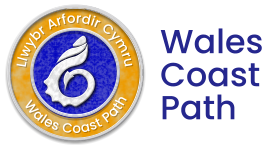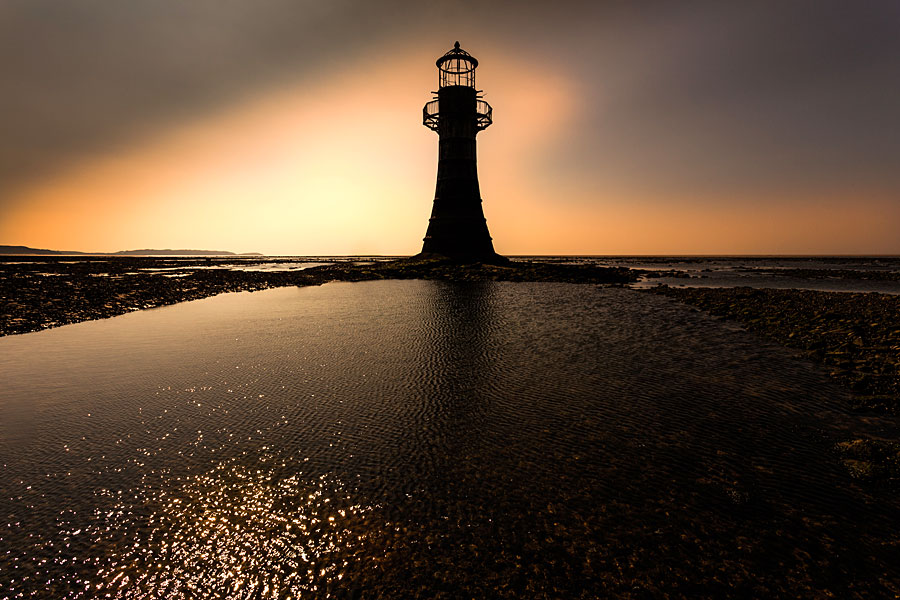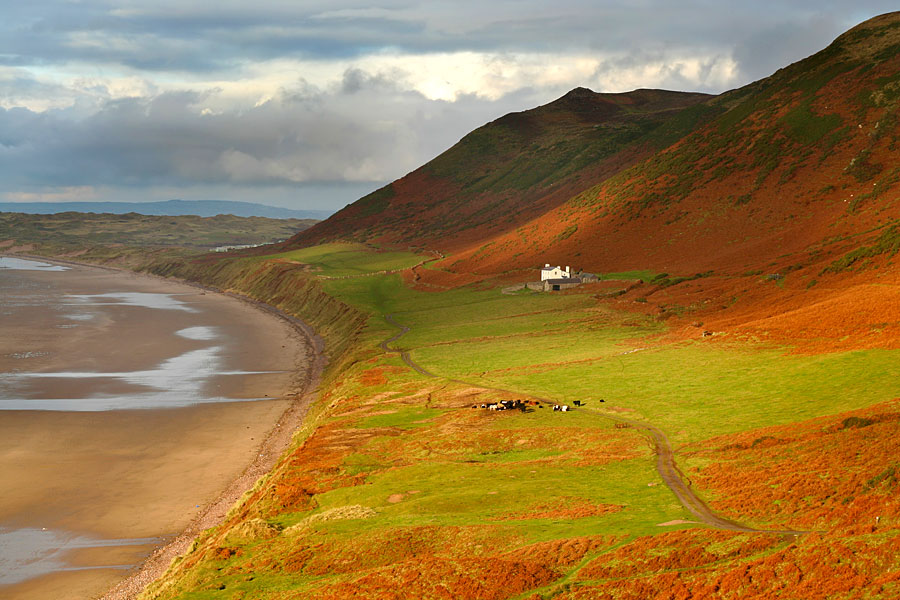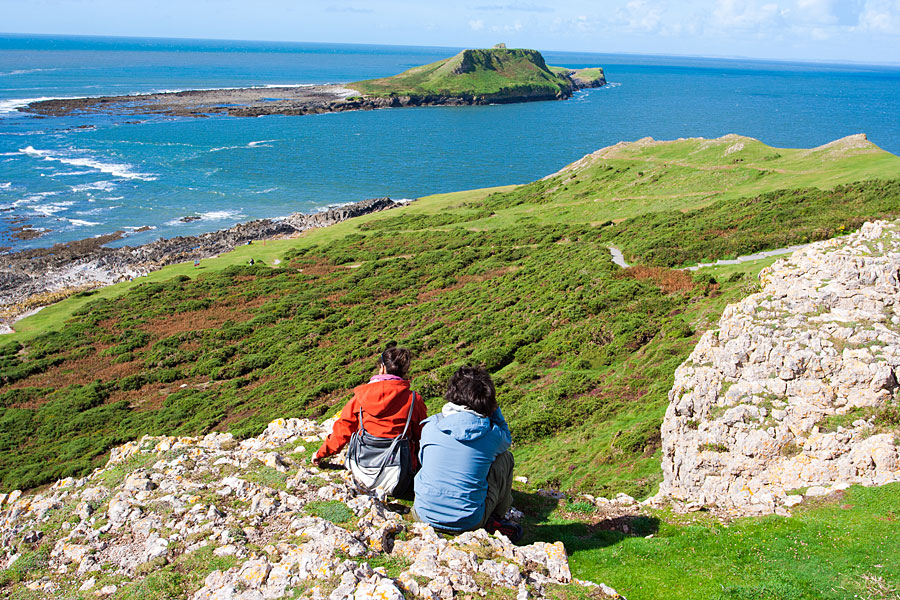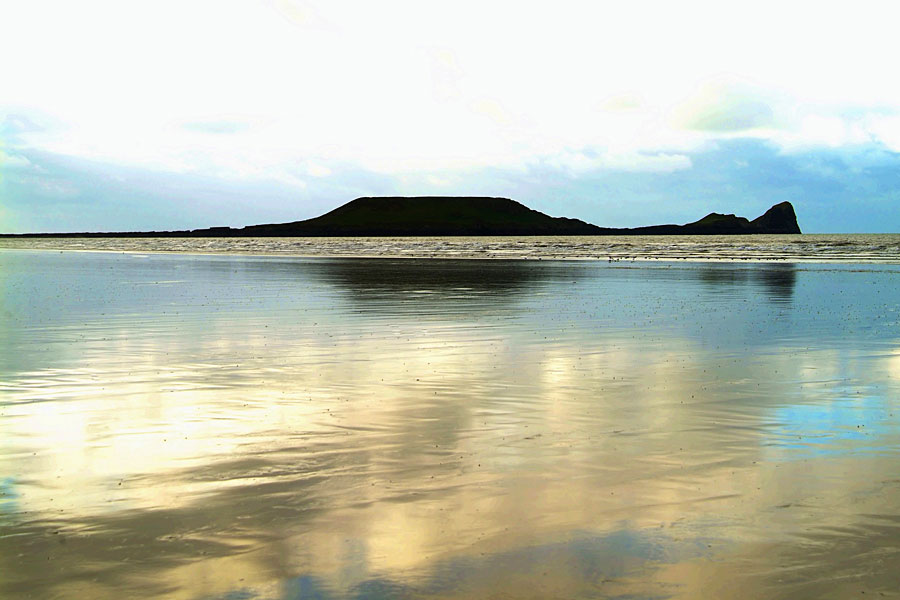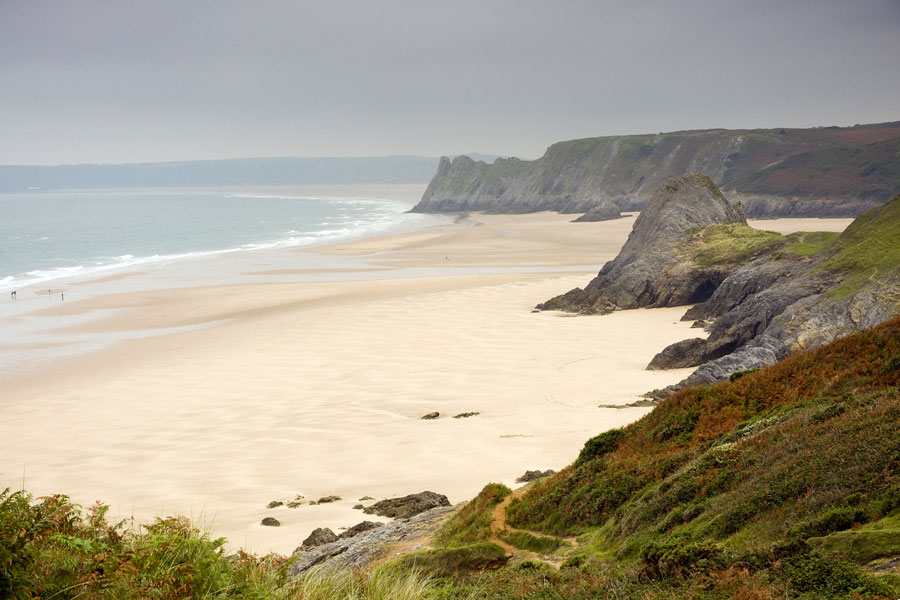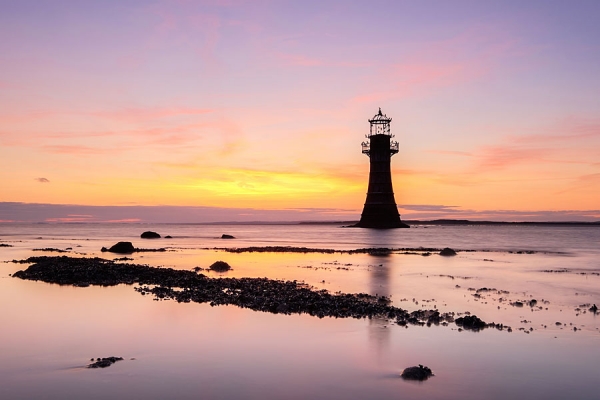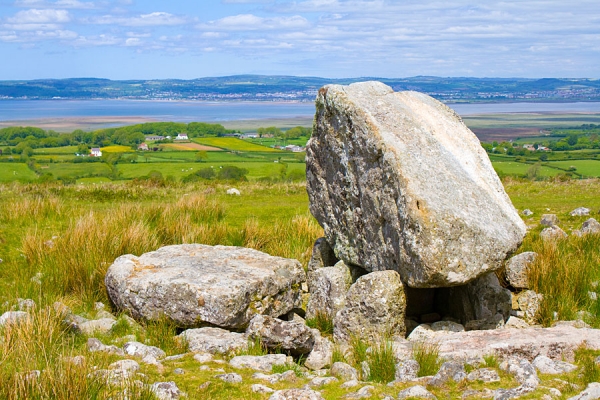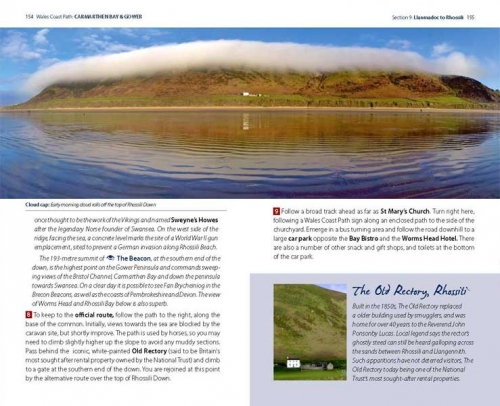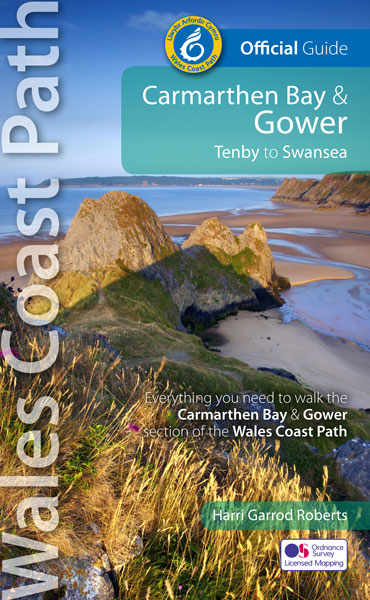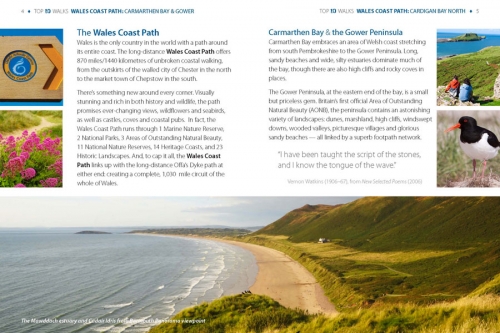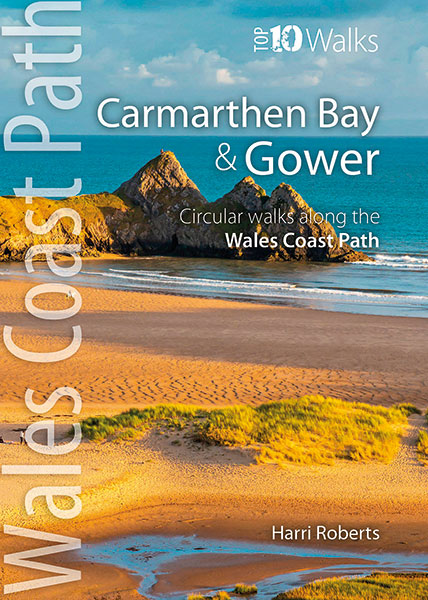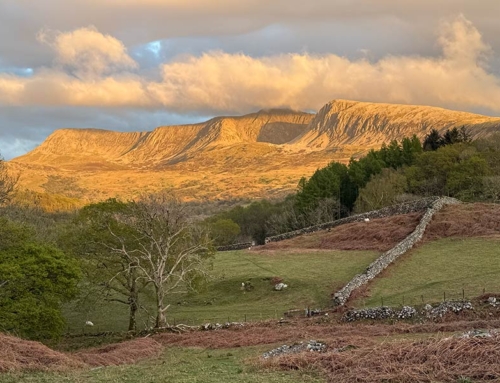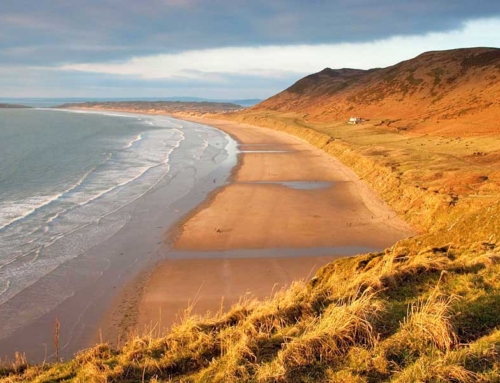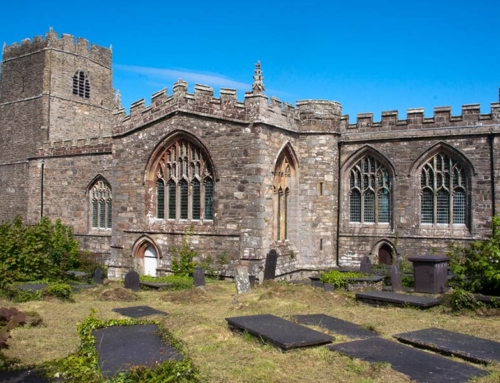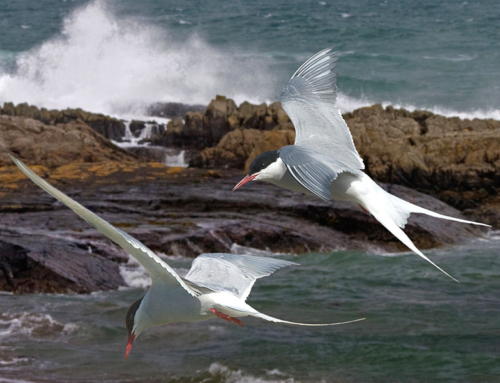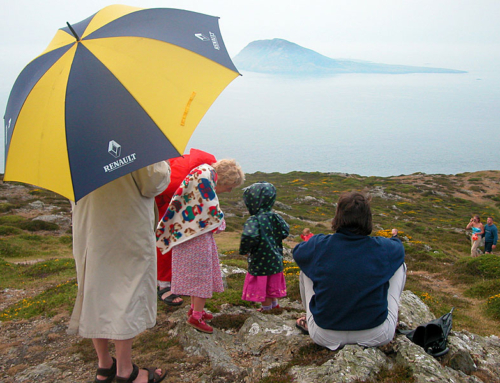Worm’s Head on the Gower is one of the wonders of the Wales Coast Path
Harri Roberts explores the stunning Gower Peninsula and explains why it’s the ideal walking destination.
GOWER IS A SMALL BUT PRICELESS GEM. Lying just to the west of Wales’s second-largest city, Swansea, and barely more than 15 miles (24km) long and 7 miles (11km) wide, the peninsula is a place of stunning and astonishingly varied natural beauty. Here are hidden coves and glorious sandy beaches, high cliffs and windswept downs, dunes, marshland, wooded valleys and picturesque villages.
Almost every path on Gower opens up a new and rewarding perspective, a different aspect of the peninsula’s varied landscape.
Gower power!
Probably best known to walkers is Gower’s south coast between Mumbles Head and Worms Head. Punctuating this wild, rocky coastline—which includes some of the most impressive limestone cliffs in Britain—are a number of popular and stunningly beautiful sandy bays; Three Cliffs Bay in particular has to be seen to be believed. Linking these bays is the Gower section of the Wales Coast Path, which provides a continuous and well-signed route along the whole length of Gower’s coast.
Dominating Gower’s western coastline is Rhossili Bay, a glorious three-mile stretch of sand facing the Atlantic full-on. At the southern end of the bay is Worms Head, Gower’s very own ‘Lands End’.
Rhossili Bay
Dominating Gower’s western coastline is Rhossili Bay, a glorious three-mile stretch of sand facing the Atlantic full-on. At the southern end of the bay is Worms Head, Gower’s very own ‘Lands End’. This narrow tidal promontory extends for over a mile into the ocean and has been the site of numerous shipwrecks over the centuries. Past the northern end of Rhossili Bay at Burry Holms is the equally impressive Whiteford Sands. Far less accessible than Rhossili, this hidden corner of Gower provides a sense of wild, open space that is difficult to match.
The north coast is formed by the three-mile wide Loughor Estuary rather than the open sea. As a result, the coastline here has a very different character, being made up mainly of salt marsh and mudflats. This wild marshland, which stretches for almost six miles between Whiteford Point and Salthouse Point near Crofty, provides a valuable habitat for numerous species of wading birds and is also home to large numbers of Gower ponies. During the busy summer months, this is an area of Gower where peace and tranquillity can still be found.
Inland Gower
Although walkers naturally tend to be attracted to Gower’s well-marked coastal paths, inland areas contain an equally diverse array of landscapes and habitats. Impressively, almost half the total land area of the Gower Peninsula is unenclosed common land, where walkers have the right to roam at will. The highest hills of the peninsula lie on the common and present spectacular views across its length and breadth. Particularly notable is the view towards Worms Head from Rhossili Down, an area of common that, at 193 metres, contains the highest point on the Gower Peninsula. Llanmadoc Hill and the long ridge of Cefn Bryn are other areas of common with incredible views over both coastal and inland areas.
Below the hills, Gower also contains a number of thickly wooded valleys offering a very different kind of walking experience. As well as being wonderful places to explore, valleys like Clyne, Ilston and Bishopston demonstrate a characteristic feature of the Gower Peninsula: the sheer variety of landscapes present in such a small and relatively populous area.
Like Wales’s other peninsulas, Llŷn and Pembrokeshire, the Gower Peninsula has a relatively mild climate, with little frost or snow during the winter months. It can be wet, though, and mud is likely to be a problem on some paths throughout the winter. Wild, windy weather can also make certain sections of the coast path dangerous.
Wildflower heaven
In summer, Gower is a popular holiday destination and many places along the coast become congested during school holidays and at weekends. Although walking is possible in fine weather at any time of the year, particularly beautiful times to visit the peninsula are late spring and early summer, when wild flowers are at their most spectacular, and autumn, when the heather on Gower’s downs glows a striking russet.
Don’t miss:
Worms Head – an iconic sight, this narrow tidal promontory also marks the southern end of one of Wales’s most magnificent bays
Whiteford Point – remote and windswept, this sandy headland at the mouth of the River Loughor is also home to an unusual cast-iron lighthouse
Cefn Bryn – Gower’s Massif Central, this long, high ridge commands views across the whole peninsula
Pennard Cliffs and Three Cliffs Bay – some of the finest coastal scenery in Britain, this is a combination of cliffs and sandy bays that is difficult to match
The Bulwark, Cilifor Top and Pen-y-gaer – three Iron Age hillforts, all offering exceptional views over the marshes and mudflats comprising Gower’s northern coast

